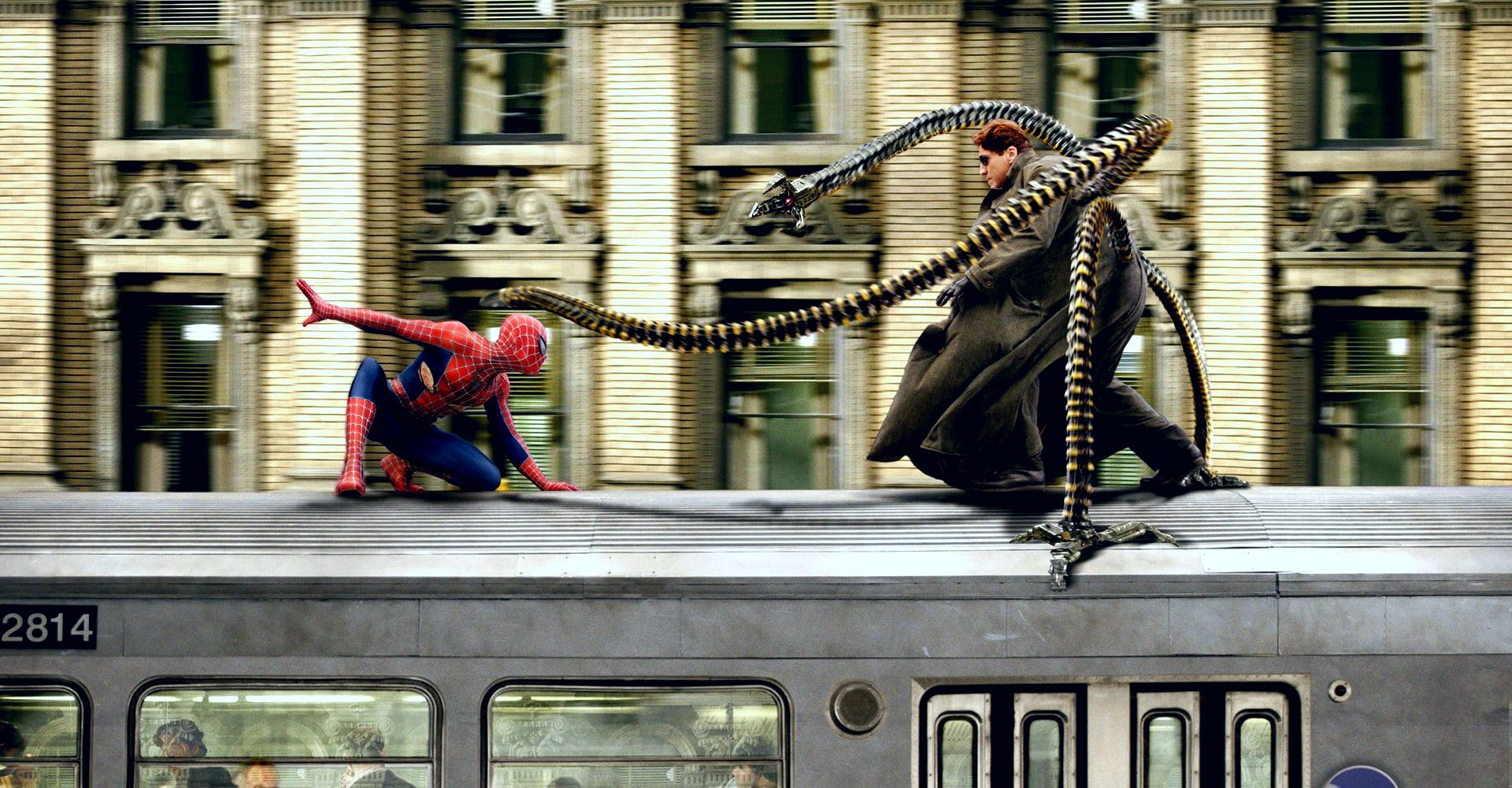VFX artists from the popular YouTube channel Corridor Crew break down what makes the riveting train sequence from Spider-Man 2 so iconic. Spider-Man 2 served as a sequel to 2002's Spider-Man and is the second installment in director Sam Raimi's original Spider-Man trilogy. The film starred Tobey Maguire as the lovable Peter Parker/Spider-Man and he was joined by returning actors Kirsten Dunst, James Franco, Rosemary Harris, and JK Simmons. Alfred Molina was cast as the super-villain, Dr Otto Octavius/Doctor Octopus, a role he will be reprising for the upcoming and highly-anticipated MCU film, Spider-Man: No Way Home.
The story of the film is set in New York two years after the events of Spider-Man 1 and focuses on Peter Parker as he struggles to find a balance between his personal life and his duties as the charismatic superhero. Meanwhile, Peter's mentor and scientist, Dr. Octavius, conducts an experiment that goes awry and leaves him neurologically fused to mechanical tentacles, turning him into the menacing Dr Octopus. It is down to Spider-Man once again to stop his archnemesis from recreating the dangerous experiment which threatens to level the city.
VFX artists Wren, Sam, and Niko, from the popular YouTube channel Corridor Crew, analyzed the train scene in Spider-Man 2 in a new video and gave their take on why it's such a memorable one. Niko mentioned how the "mini problems" in the scene required "clever solutions," and pointed out the sequence involving Spider-Man "skating" along the road beside the subway line with the use of his webs as an example. Wren continues to talk about the latter half of the set-piece which shows Peter attempting to stop the moving train by attaching multiple webs to the buildings. He then explains how a "real, practical, bent-in version" of the train was used in addition to the "regular version" to show the actual train car "buckling." Check out the video below to see their full breakdown.
The artists summarized the success of Spider-Man 2 coming down to the "expert craftsmanship" in the thought process behind "what's going into the shots," and praised the seamless blend of CGI and practical effects in the film. Moreover, they commended the "cohesiveness" of the film as a whole which also helps the film's cause in terms of consistency and the "story that's being told." Their comments ring true as the visual effects of Spider-Man 2 have had a lasting impact over the years, which is further accompanied by its Academy Award win for Best Visual Effects.
It's no secret that Spider-Man 2 is widely regarded as one of the greatest superhero movies of all time, and its influence is still felt to this day. There have been multiple homages to sequences in the film, including a scene from Spider-Man: Homecoming that almost mirrors the above-mentioned train set-piece, where the titular hero tries to fix a ferry that's been torn in half. The forthcoming No Way Home could also possibly find a way to do something similar and honor the superhero classic in its own way. If that proves to be the case, fans will be nothing but pleased as it would enrich Spider-Man 2's legacy even further.
Source: Corridor Crew

